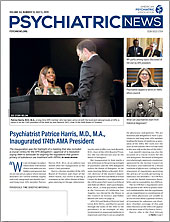While Alzheimer’s disease receives a great deal of public attention, there are numerous pathways by which the brain can be stripped of its ability to process and remember information. Understanding these various mechanisms of dementia and their subtle differences in symptoms is needed to improve diagnosis and treatment for patients.
In the June issue of the journal Brain, an international group of experts convened by the National Institute on Aging (NIA) described a class of dementia known as limbic-predominant age-related TDP-43 encephalopathy, or LATE. As suggested by the name, LATE is a late-life dementia that typically manifests in people ages 80 and older.
The expert group hopes their report on LATE—which provides an overview of known clinical features, some recommendations for conducting brain autopsies, and key areas for future research—will help raise awareness of this understudied disorder that has come to light only over the past decade.
In patients with LATE, the protein TDP-43 (transactive response DNA-binding protein of 43 kilodaltons size), which regulates the expression of hundreds of genes in the brain, becomes misfolded in neurons. This misfolding leads to the accumulation of toxic TDP-43 clumps, akin to the amyloid-beta plaques seen in the brains of patients with Alzheimer’s. The presence of misfolded TDP-43 is not unique to LATE; TDP-43 dysfunction in the frontotemporal lobes is a main feature of a class of disorders known as frontotemporal dementia (FTD). In FTD, the toxic TDP-43 clumps appear in brain regions involved in personality and behavior. In LATE, the toxic TDP-43 clumps appear in brain regions involved with memory such as the amygdala and hippocampus, like what occurs in Alzheimer’s disease. As such, LATE is pathologically similar to FTD but clinically similar to Alzheimer’s. Patients with LATE tend to experience a more gradual memory decline over time than those with Alzheimer’s disease. However, if LATE manifests in older patients with Alzheimer’s, it accelerates memory loss.
While many questions about LATE remain, all evidence suggests that this disorder is common among the oldest adults. Current analyses of autopsied brains suggest that at least 20% and perhaps as many as 50% of people 80 years and older have LATE-like neuropathology.
With the first wave of baby boomers approaching their 80s, focusing more attention on LATE “is an opportunity to get ahead of the game for a disorder that could have a huge public health impact,” said Peter Nelson, M.D., Ph.D., a professor of pathology at the University of Kentucky and co-chair of the NIA working group studying LATE.
The confirmation of LATE in older adults could also hold significant implications for Alzheimer’s disease, Nelson added. Since these two conditions are virtually identical from a clinical perspective, it is likely that many people, particularly older seniors, diagnosed with Alzheimer’s may instead have LATE or a combination of Alzheimer’s and LATE. Though this mistake would not currently impact patient care, the inclusion of patients with LATE in clinical trials testing potential Alzheimer’s medications may explain why such trials have proven disappointing.
The outstanding questions about LATE present an opportunity for psychiatrists, Nelson concluded. “We need more research to characterize the non-memory correlates of this disorder,” he said. Though LATE is primarily defined by cognitive problems, the limited evidence available suggests patients do experience psychiatric symptoms, notably delusions and agitation. These symptoms are also prevalent in Alzheimer’s disease, but there may be subtle differences in how they appear that might help distinguish one disorder from the other or confirm that a person has both, he said. ■
The full report from the LATE Consensus Working Group is posted
here.
